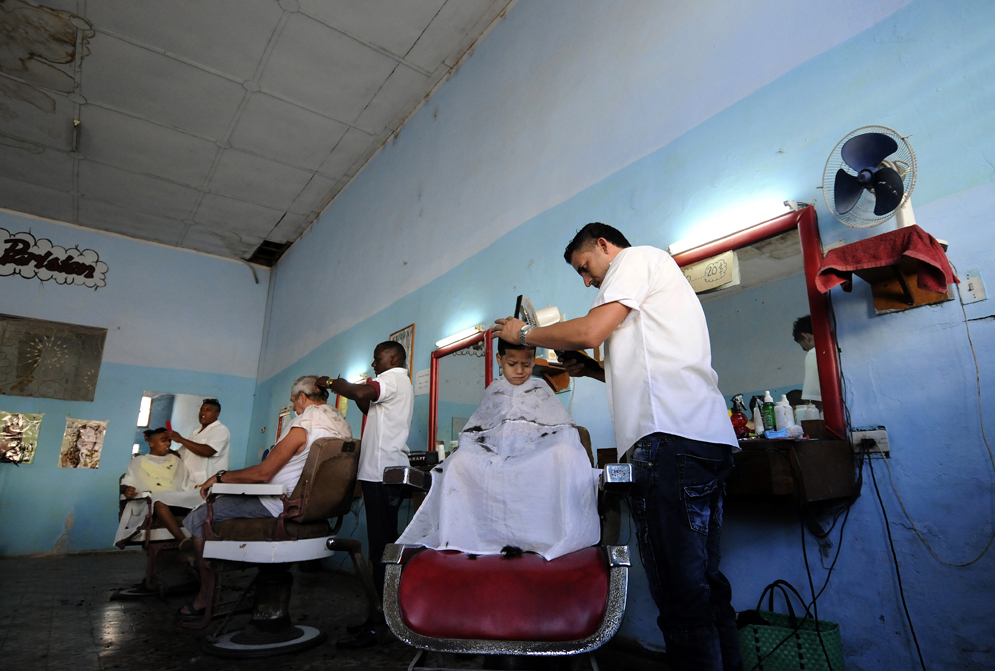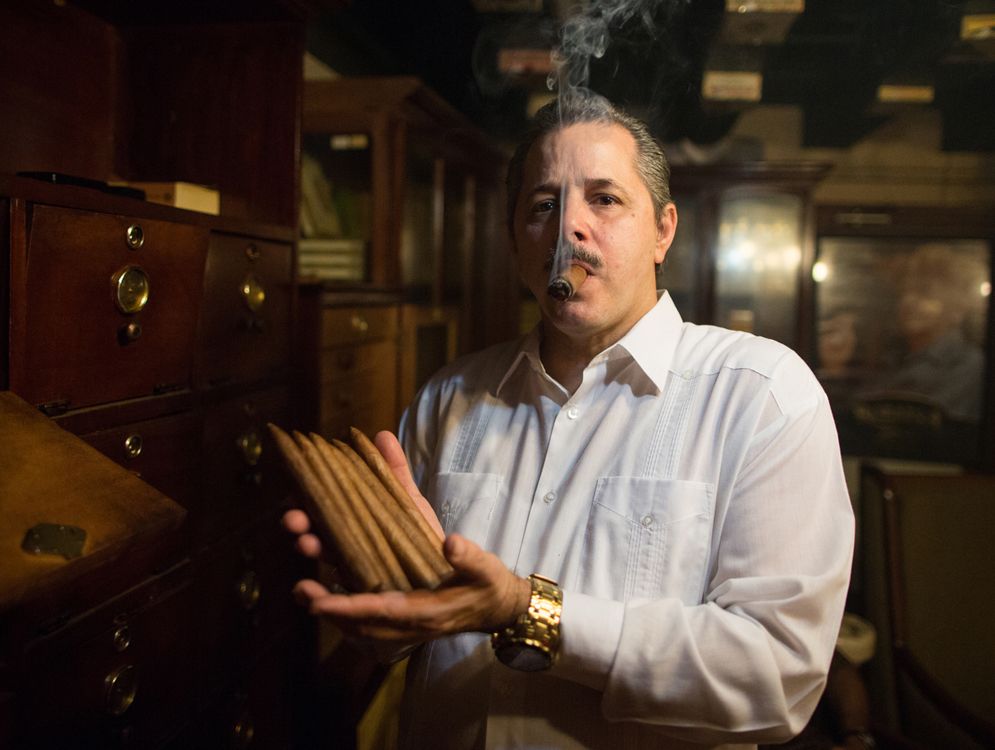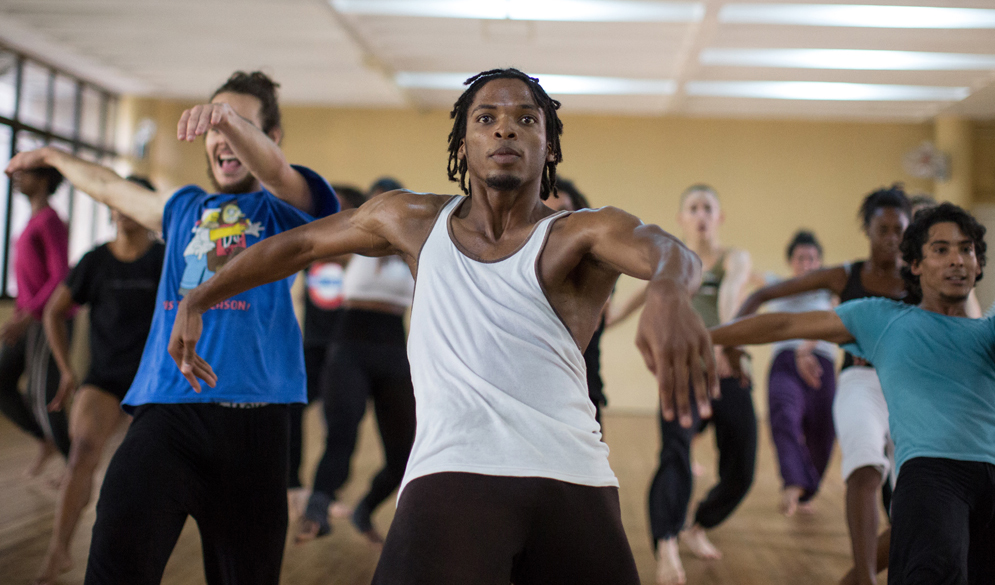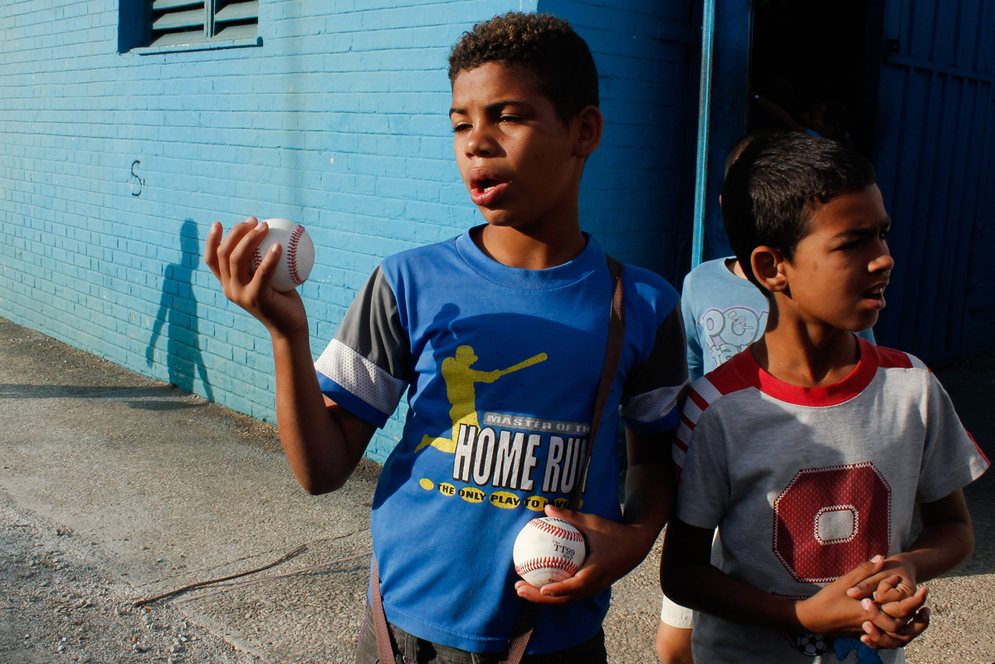Shining a Light on Cuba
COM students’ dispatches, photos lead to GlobalPost series

A vintage car sits in the rain in Havana. Cars from the 1950s and 1960s are popular in Cuba, but the engine and all the interior parts are shipped in new, from China and other countries. Photo by Michael Cummo (COM’13)
A course in international journalism should, if possible, send student reporters out of their comfort zones—and their country codes. That’s the experience Stephen Kinzer proposed for his Foreign Reporting class, and Thomas Fiedler, dean of the College of Communication, offered his enthusiastic support. In spring 2013, with funding arranged and visas procured, Kinzer (CAS’73), a College of Arts & Sciences visiting professor of international relations, and six students spent a week reporting from Cuba. After months immersed in preparatory study of Cuban history, politics, and culture, they teamed up with an equal number of photojournalism students and Essdras Suarez, a Pulitzer Prize–winning Boston Globe photojournalist and COM journalism lecturer, to apply their skills in the field. Their efforts led to an online series for GlobalPost and a travel feature on the website VICE.

A boy gets his hair cut in Cárdenas. Photo by Michael Cummo
“We often use the expression that at BU the world is our classroom,” says Fiedler (COM’71). “In Stephen Kinzer’s course, the world—or a piece of it—was the class itself.” Cuba easily met the basic criteria of the course in that it required international travel to a country “where the language, culture, and of course, the politics differed markedly, even dramatically, from our own,” says Fiedler. “It also had the added allure of being a relatively undercovered country, largely because of the isolation imposed by the political estrangement between it and the United States. In sum, Cuba offered an exotic opportunity—and we grabbed it.”

A young boy rounds a marker as he takes part in a foot race as part of an outdoor gym class in Havana. Photo by Sarah Ganzhorn (COM’14)
The students’ professional-quality dispatches and photographs paint a poignant, instructive, and often surprising portrait of contemporary Cuban life, from its Jewish and gay communities to its tattoo artists. Taken together, the articles and photographs offer a virtual tour of a culture that, as Kinzer writes in his introductory article, is haunted by “the specter of prosperity.” The changes in the island nation are astonishing, he says. His students found Cuban streets lined with computer schools, cafés, and yoga studios. It’s a topsy-turvy economy where serving lunch to tourists is among the most coveted of jobs. In “Cuban Art Opens Up to the World,” Anne Whiting (CAS’13) reveals that “rather than suffer in garrets and work odd jobs,” some artists “are among the country’s highest earners, and enjoy privileges far beyond the means of most other Cubans.” In his entertaining “Legend of the Cuban Cigar,” Andres X. Vargas (CAS’15) visits an Old Havana cigar shop and finds that the world-renowned quality of Cuban cigars endures, but their price makes them out of reach for most Cubans, many of whom resort to cigarettes. In his feature in VICE, accompanied by startling photographs by Stacey Rupolo (COM’13), Jasper Craven (COM’15) reports that in Cuba tattoo artists earn more than doctors and lawyers.



In Cuba, tattoo artists earn more than doctors and lawyers. Photos by Stacey Rupolo (COM’13)
Kinzer, a Spanish speaker and former longtime foreign correspondent for the New York Times, where he reported from Latin America, Turkey, Iran, and eastern Europe, has many contacts in Cuba and laid much of the groundwork. But students had to combat any shyness or reluctance to approach and interview people on the street or at their workplaces.
“A lot of interviewing skills emerged from this trip,” says Kinzer, who did much of the translating. “One young woman had to go the park where gays were gathering and just walk up and talk to them about their lives in Cuba.”

A mother and daughter embrace in their home in Cárdenas. The mother was visiting from Miami. Photo by Melanie Reiders (COM’14, CAS’14)
Whiting says she “learned so much about Cuba’s culture, its people, and its unique heritage,” a sentiment echoed by Vargas, who says that “the trip exposed us to a different world.” He found himself astounded by the trip, his questions about Cuba “only further complicated with deeper questions, critical thinking, and curiosity for this historical island.”
The trip, paid for by BU and augmented by $1,500 from each of the students, was designed to teach them two things: how to be a foreign correspondent and Cuban culture and history. In the classes leading up to the trip, Kinzer brought in guest lecturers, among them a local public health researcher who had visited Cuba to learn about its health care system, and Michelle Wojcik, the owner of Galeria Cubana, one of the few US galleries issued a license to import artwork from Cuba. The students visited Cuban restaurants in Jamaica Plain, as well. “It was all about getting them into the Cuban mind-set,” Kinzer says.



Reynaldo, an owner of La Casa Del Habano in Old Havana, holds his signature torpedo cigars. Photos by Scott Eisen (COM’14)
The students chose their general story topics well before the trip. As they set out, Kinzer urged them to “tell the stories for those who can’t tell their own stories.” The students pursued six topics: Jews in Cuba, LGBT in Cuba, Sports in Cuba, Cigars in Cuba, Tattooing in Cuba, and the Cuba Contemporary Arts Scene. “It’s really quite a variety, and they are stories that are, to me, richer than the stale political reports we always get about what’s happening with Castro, who’s up and who’s down,” notes Kinzer, who had approached Global Post about the possibility of running the stories as a series. “These are stories about the texture of Cuban life, the kinds of stories I always liked to write when I was a correspondent—stories that give readers a sense of what it’s like to live in a place rather than what the foreign minister told the ambassador yesterday.”

Members of the Chevet Achim Orthodox Synagogue in Old Havana make yarmulkes with embroidered Cuban symbols by hand. Photo by Taylor Hartz (COM’14)
In his travels as a journalist, Kinzer is always on the lookout for “the small story that tells the big story.” As the students’ projects progressed, they began to understand that their pieces shared an underlying theme: the end of Cuba’s isolation from the world. “Globalization is coming to Cuba,” he says, citing student stories like the one about Cuban artists showing around the world. “Cuba is groping for a new model and foreign influences are coming in like never before.”

Members of the Danza Contemporanea de Cuba troupe practice at the Teatro Nacional in Havana. Photo by Scott Eisen
The students learned, as seasoned correspondents know, that in setting out to report one story, often a related, but more compelling one is discovered. That’s what happened to Caitlin Lesczynski (CAS’13), who started out to write about Cuban baseball. As she and Kinzer approached the Palmar del Junco stadium in Matanzas, where the first organized baseball game in Cuba was played in the 1870s, Lesczynski saw a kid kicking around a soccer ball, and their conversation with him influenced her to switch to a story about how young Cubans are becoming more passionate about “football,” while baseball’s popularity is declining. “We had this moment of a kid playing soccer right outside the historic stadium where Cuban baseball was born,” Kinzer says, “and as Lesczynski began talking to people, a new theme—not the story she planned to write about baseball—developed.”

Three boys sell baseballs outside of Estadio Latinoamericano before a game between the Matansas Crocodiles and the Havana Industriales. Photo by Stacey Rupolo
Students also got to dip their feet into the rigorous professional editing process, which can involve multiple rewrites. “After we got back from Cuba at the end of April, it was a constant process of back-and-forth, fixing and reediting,” says Kinzer. And the bouncing back-and-forth from the GlobalPost editors—this was quite new for the students. The last few classes were given over to one-on-one tutorials.
“The course was a success by every measure, and I am certain that these budding foreign correspondents will remember this class as one of the most interesting of their BU years,” Fiedler says. Although Kinzer has left BU to teach at Brown University, the dean hopes to recruit another career foreign reporter to offer the class next year. “But organizing a trip that will top Cuba will be a challenge,” he says.
Comments & Discussion
Boston University moderates comments to facilitate an informed, substantive, civil conversation. Abusive, profane, self-promotional, misleading, incoherent or off-topic comments will be rejected. Moderators are staffed during regular business hours (EST) and can only accept comments written in English. Statistics or facts must include a citation or a link to the citation.